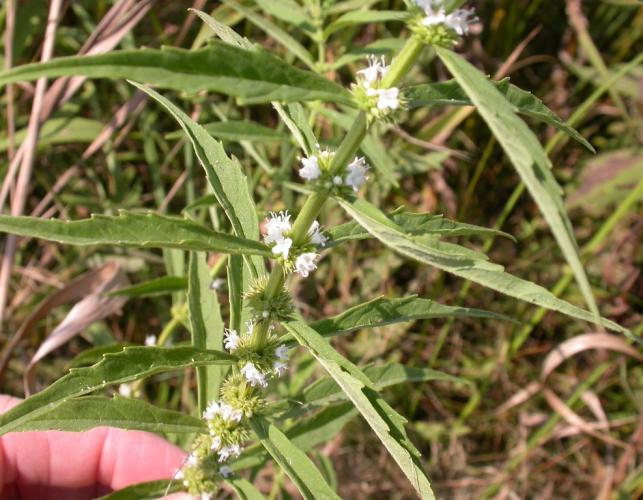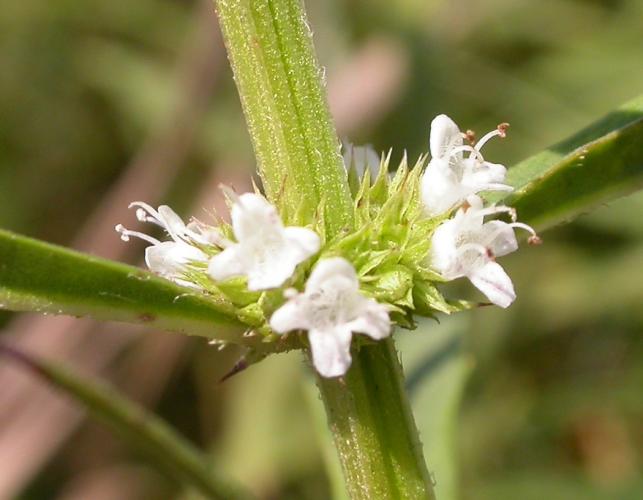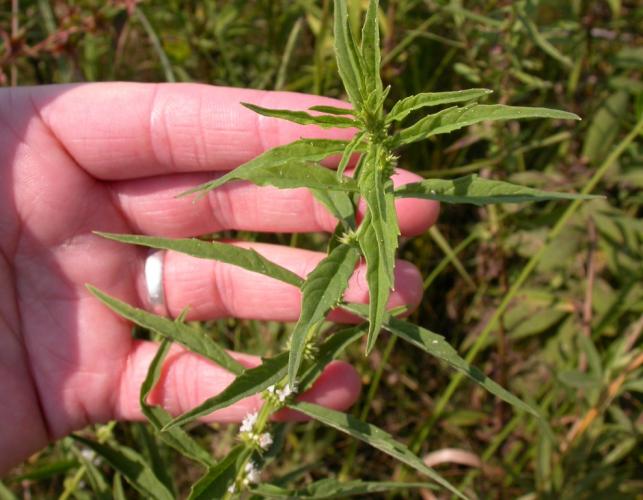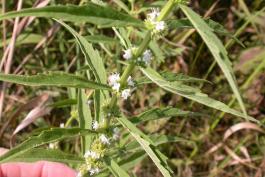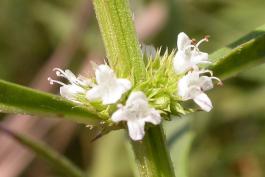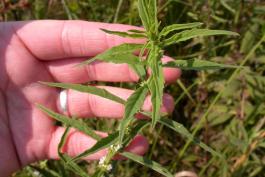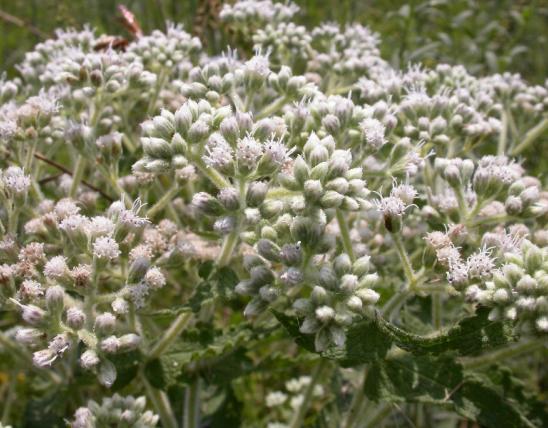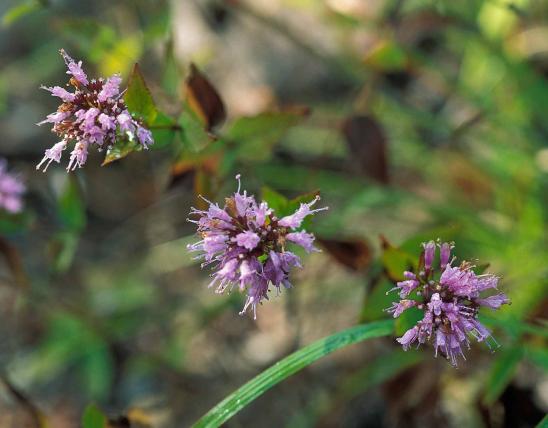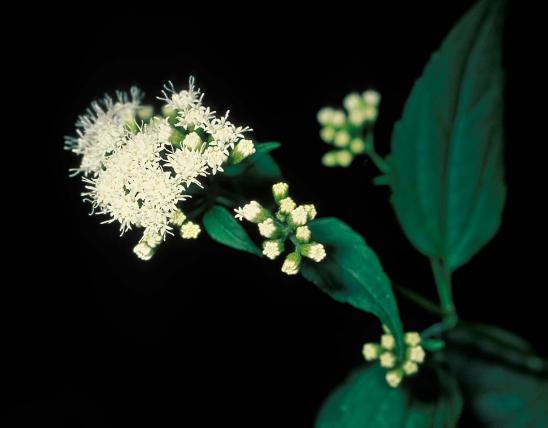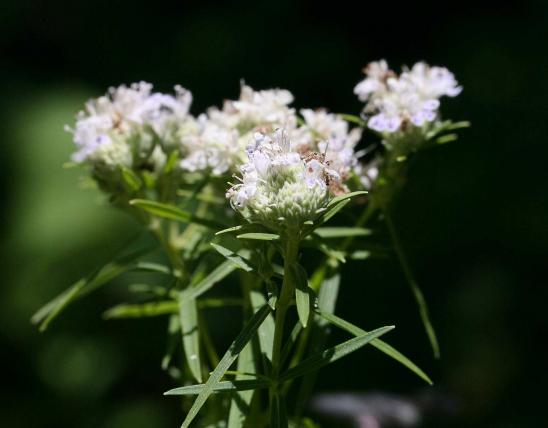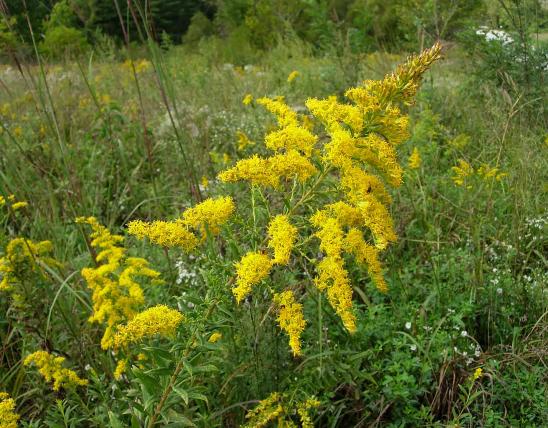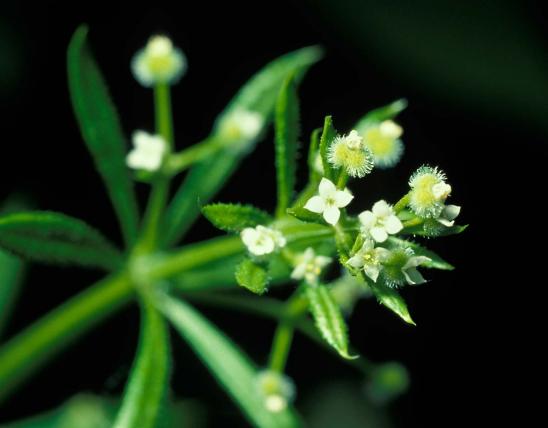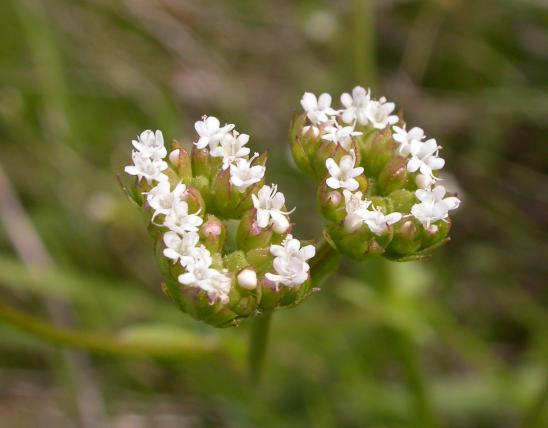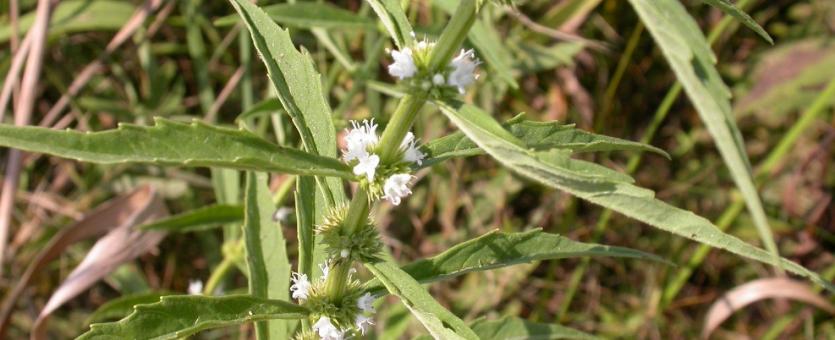
American bugleweed is an upright perennial growing from elongated rhizomes. The distinctive narrow, opposite leaves, clusters of small white flowers, and square stems help identify this native mint. Unlike most other mints, this plant is not aromatic when crushed.
The narrowly ovate or lance-shaped, coarsely toothed leaves are opposite on the square stalk, each pair at a right angle to the pair below. Each pair is well-spaced from the others. The leaves toward the base of the plant are increasingly deeply toothed, to the point that the teeth on the lowest leaves are actually narrow lobes. Meanwhile, the leaves at the top of the plant may only have a few coarse teeth.
A small, dense cluster of ¼-inch-long, white flowers occurs on the stem where the leaves attach. The corollas have 4 lobes (the upper lobe is broader than the others and is shallowly notched), and the stamens extend beyond the petals. Blooms June–October.
Similar species: Four other bugleweeds (Lycopus spp.) have been recorded for Missouri.
- Virginia bugleweed (L. virginicus) is scattered nearly statewide in bottomlands, swamps, streambanks, ditches, and other moist habitats. The corollas are 4-lobed, and the stamens do not protrude from the flower tube. The calyx lobes are triangular or broadly triangular and usually bluntly pointed, sometimes rounded (not narrowly tapered to a sharp point).
- Water horehound (L. rubellus), is scattered mostly in southern Missouri, in bottomlands, streambanks, ditches, edges of crop fields, and other moist habitats. It’s a larger plant, to nearly 4 feet tall, and the corollas are 5-lobed. Other key identifiers include the calyx teeth, which are longer and more tapered than other bugleweeds’ and are narrowly triangular (looking very sharp and pointy in comparison). Also, the leaves often have winged leaf stems. The flowers are generally larger and showier than American bugleweed.
The other species are rarer, only known from limited locations and/or historical collections:
- Northern bugleweed, or one-flowered horehound (L. uniflorus) has a very limited occurrence in the state and is listed as a Missouri species of conservation concern. It has 5-lobed corollas.
- Rough bugleweed (L. asper) is also a Missouri species of conservation concern, ranked as SH (historical), having been collected once, on a riverbank in Jackson County. It is quite similar to American bugleweed, with 4-lobed corollas, but its lowest stem leaves to not have the deep, narrow lobes that characterize American bugleweed.
Finally, a plant in the madder or coffee family (Rubiaceae) called buttonweed (Spermacoce glabra) resembles all the bugleweeds in overall growth form and in having dense clusters of small white flowers along the stems. There are many subtle differences, however, including more clearly funnel-shaped flowers with 4 fairly equal, triangular lobes; deeply lobed calyces lacking obvious midveins; and distinctive stipules on the stalk between the paired leaf bases. It is scattered mostly in the southern half of the state and occurs in moist habitats.
Height: stems 1–3 feet.
Scattered statewide.
Habitat and Conservation
Occurs in bottomland forests, sloughs, oxbows, banks of streams and rivers, margins of ponds, lakes, and sinkhole ponds, fens, bottomland prairies, moist swales of upland prairies, and bases and ledges of bluffs. Also occurs in ditches, in fallow fields, along railroads and roadsides, and in other moist, disturbed areas.
Status
Native Missouri wildflower.
Human Connections
The various bugleweeds have historic medicinal uses. In other regions of the world, some bugleweed species have been used as food. The alternate common name “water horehound,” often used for members of the genus, likens them to another type of mint (Marrubium vulgare), the true horehound from which the medicinal-tasting candy is made.
The genus name, Lycopus, has Greek roots and means “wolf foot.” The genus name was apparently already established with European members of the genus before the American species were named.
The bugleweeds probably won’t win any awards among flower gardeners. But they do catch your eye with the interesting geometry of their leaves.
Ecosystem Connections
Like most other members of the mint family, bugleweed flowers are nectar sources for a variety of insects, including many kinds of bees, butterflies, beetles, flies, and wasps.
Several other kinds of insects feed on the foliage or sap: grasshoppers and katydids, aphids, and more. The larvae of certain tiny flies in genus Neolasioptera cause galls to form on the stems and leaves as they feed and develop inside the plant. Caterpillars of the hermit sphinx moth feed on plants in the mint family, and bugleweeds, plus beebalms and sages, are some of its notable host plants. You can identify these brown hornworm caterpillars by a big black oval spot, bordered with a paler ring, on the body near the head.
Apparently, mammals rarely eat bugleweeds.
Together with the many other plants that live in lowlands, stream banks, and other flood-prone places, bugleweeds play an important role in stabilizing soils against erosion.
